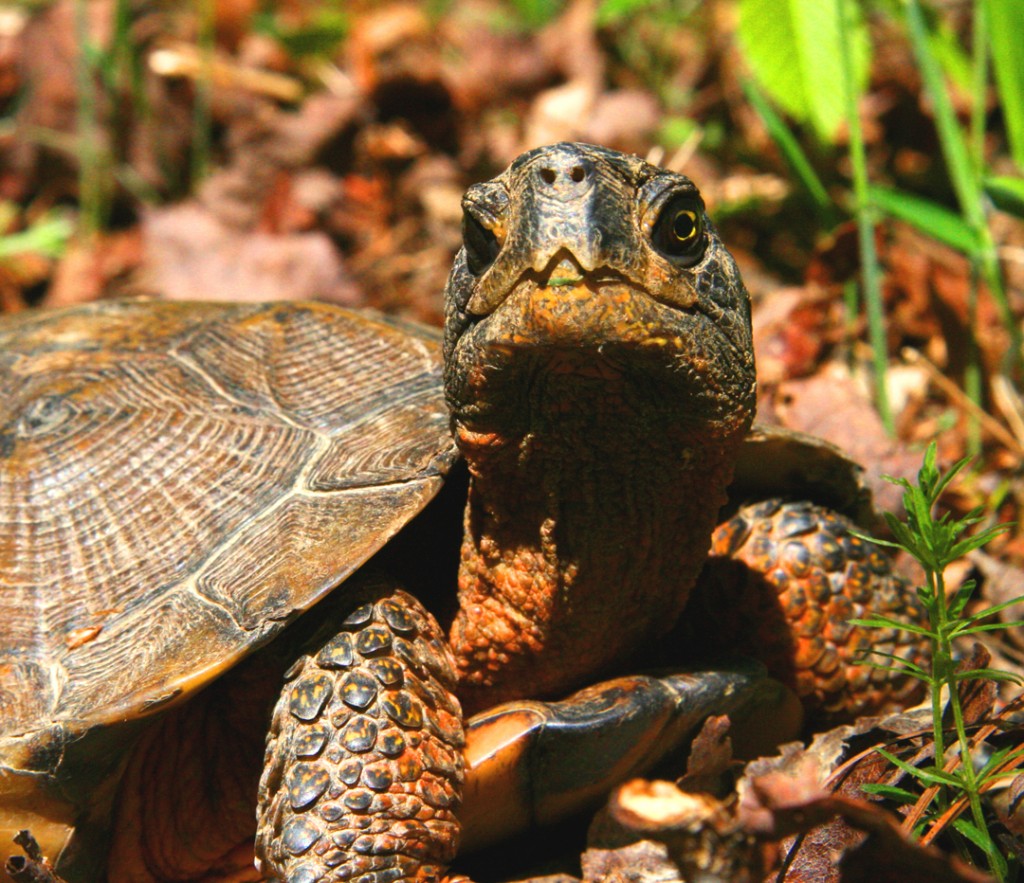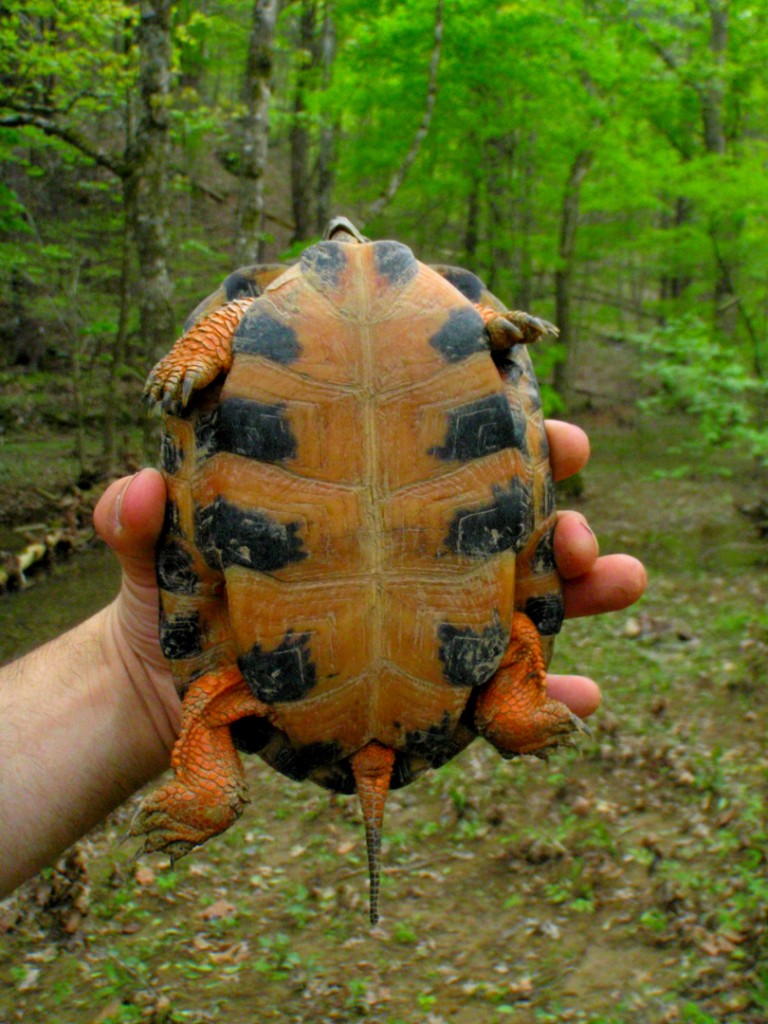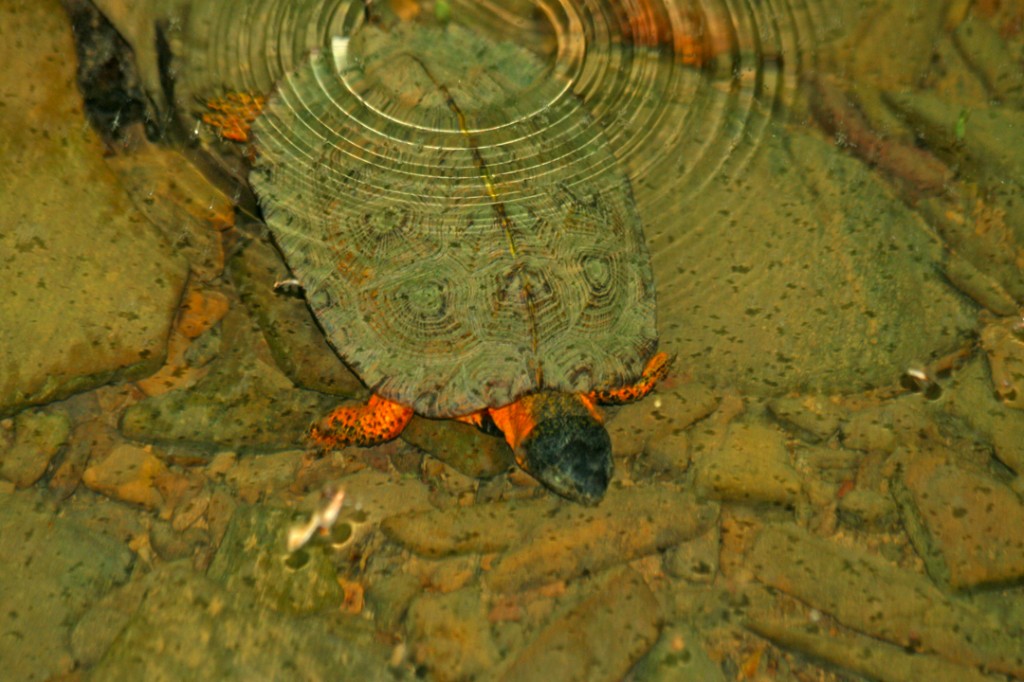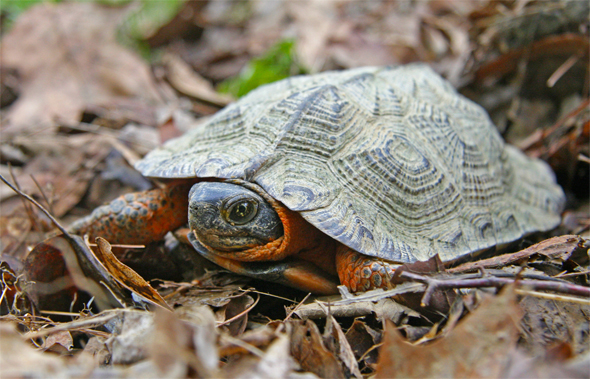For being such a unique and charismatic member of its family, the wood turtle remains largely unrecognized and unknown by most people who live in and share its range.
Named because of its distinct shell, which appears to have been carved from wood, the wood turtle is also occasionally known as “Old Red Legs,” because of its bright red-orange legs. Some say it looks like a cross between a box turtle and a snapper turtle and is sometimes confused for one or the other by the untrained eye.
The wood turtle is a semi-aquatic species, found in some of our deeper freshwater creeks as long as there is ample forested area surrounding it and nearby open areas with abundant sunshine that they can use to lay their eggs. Because of their varied habitat needs, they often travel great distances to find a mate or lay their eggs, many times causing them to end up in a deadly roadway.
The wood turtle eats a variety of things but most of the time it consumes mushrooms, berries, and earthworms. Amazingly, these turtles have displayed an instinct to stomp their feet on the ground to simulate rain to worms hiding underground, signaling them to surface. They are also said to be great climbers and noted as one of the most intelligent turtles.
The ancient creature is only found in New England, portions of the mid-Atlantic, and areas bordering the Great Lakes from the mid-west to southern Canada. Although still occasional found in Harford County, which is at the southern end of their range, they are already on the waiting list for the Federal Endangered Species Act.
With populations declining quickly across their range, it is important to leave wood turtles in the wild and not keep wild turtles as pets. The state of Maryland has made it illegal remove them from the wild for this reason. We can all help our native turtles by helping them cross the road to the direction they are heading and to help fund research so we can better understand the causes of their decline, hopefully being able to restore healthy populations by reducing threats and protecting habitat.
These are critical times where the right amount of positive energy in the right direction can help us gain the knowledge and take the actions that we can together use to help species like the wood turtle no longer be adrift without a home in our fragmented world.
To learn more, please watch our brand new documentary on the wood turtle. Be sure to watch it in 720P or 1080P HD!





